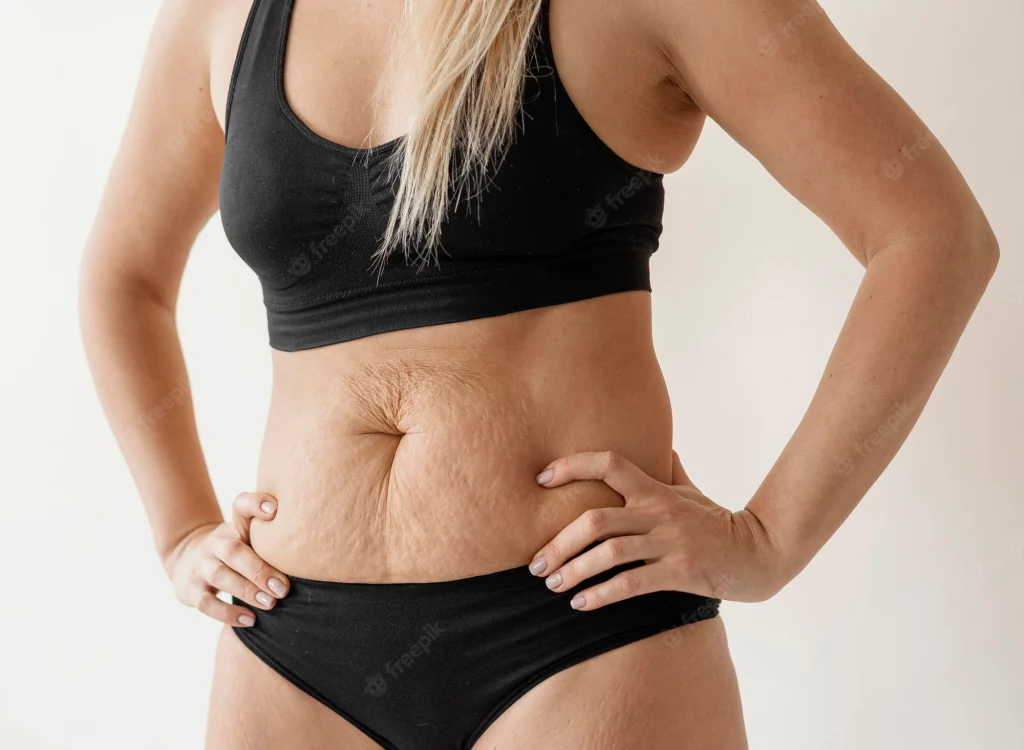
Stretch marks, also known as striae, are harmless imperfections that can appear on the skin when you expand or contract your muscles. They can develop during pregnancy, weightlifting, or other physical activities. Although stretch marks can be unsightly, they don’t cause any serious health problems.
Stretch marks may occasionally cause pain, especially during the first few months after the mark appears. This pain is usually mild and short-lived and usually goes away on its own within a few weeks. If the pain persists or becomes severe, talk to your doctor.
Contents
- 1 Stretch Marks: What They Are and How They Form
- 2 The Types of Stretch Marks
- 3 How to Get Rid of Stretch Marks
- 4 The Best Ways to Treat Stretch Marks
- 5 Stretch Marks: What They Are and How to Treat Them
- 6 Causes of Stretch Marks
- 7 How to Get Rid of Stretch Marks
- 8 Home Remedies for Stretch Marks
- 9 What are stretch marks?
- 10 How do stretch marks form?
- 11 Conclusion
Stretch Marks: What They Are and How They Form
Stretch marks are a common side effect of pregnancy and weight gain. They can form on any part of the body, but are most common on the abdomen, thighs, and breasts.
Stretch marks happen when the elasticity in the skin is decreased after repeated stretching or pulling. The skin becomes thin and fragile, which makes it more susceptible to tears and bruises.
Common causes of stretch marks include: overworking the skin during exercise, obesity, inadequate hydration, high levels of stress, and genetics.
There is no known cure for stretch marks, but they can be treated with topical creams and ointments, laser therapy, surgery (including cryotherapy), and camouflage makeup.
The Types of Stretch Marks
Stretch marks are a common occurrence during pregnancy and childbirth. They can also occur as a result of weight loss, muscle tension, or aging.
There are three types of stretch marks: striae (thin lines), rhomboids (rounded bumps), and varicose veins (large, blue or purple patches). Each type has different causes and treatments.
Striae Stretch marks occur when the skin stretches excessively in one direction. Causes may include obesity, overuse injuries, and genetic factors. Treatment focuses on restoring elasticity to the skin. Rhomboids Stretch marks form when the fat beneath the skin rubs against each other and creates small bumps. This happens when the skin is stretched too much in one direction. Treatment involves wearing compression garments and applying creams or ointments to the affected area. Varicose veins Stretch marks can form due to extremes in pressure, such as during childbirth or weightlifting. They are also a result of age and poor circulation. Treatment typically includes cold compresses, topical creams, or surgery.
How to Get Rid of Stretch Marks
Stretch marks can be an embarrassing and painful reminder of difficult times in your life. Unfortunately, there is no one-size-fits-all solution to getting rid of stretch marks. However, following a few basic tips can help make the process smoother.
To start, it’s important to know that stretch marks are caused by skin stretching beyond its normal range of motion. This can occur during childbirth, weightlifting, and any other activity that involves a lot of muscle or movement.
If you’re looking to get rid of stretch marks quickly, you may want to try one or more of these methods:
– Applied heat: Applying heat to the area will cause the skin to contract and shrink. This method is often used in dermatology clinics to treat wrinkles and other skin problems. Be sure to talk to your doctor before using this approach on stretch marks because it can be dangerous if applied incorrectly.
– Topical treatments: Some topical treatments available over the counter (such as benzoyl peroxide) can help reduce the appearance of stretch marks. However, these treatments are not always successful and should only be used in conjunction with other treatments such as
The Best Ways to Treat Stretch Marks
There is no one-size-fits-all answer to treating stretch marks, as the condition can vary depending on the severity and location of the marks. However, here are some general tips to help relieve pain and improve skin quality:
Apply a topical cream or ointment: One of the most common ways to treat stretch marks is to apply a topical cream or ointment. This can help soften and smooth the skin, which can reduce the visibility of the marks.
One of the most common ways to treat stretch marks is to apply a topical cream or ointment. This can help soften and smooth the skin, which can reduce the visibility of the marks. Follow a regimen of light massage: A regimen of light massage may also be helpful in reducing pain and improving skin quality. This type of massage helps circulate blood and lymphatic fluids, which can help improve skin tone and texture.
A regimen of light massage may also be helpful in reducing pain and improving skin quality. This type of massage helps circulate blood and lymphatic fluids, which can help improve skin tone and texture. Use a sun protection agent: Sun protection is key when treating stretch marks, as overexposure can lead to further damage.
Stretch Marks: What They Are and How to Treat Them
Stretch marks are a common side effect of pregnancy and weight gain. They are also caused by intense exercise, sun exposure, or childbirth. Stretch marks typically appear as red, brown, or black lines on the skin. They usually fade over time. However, they may occasionally become raised and painful.
There is no one definitive way to treat stretch marks. You may need to try different techniques to find one that works best for you. You can use creams, lotions, or ointments to soothe the skin. You can also use topical treatments such as light therapy or waxing. Surgery may be necessary in some cases to remove the stretch marks completely.
Causes of Stretch Marks
Stretch marks are caused by the stretching and compressing of the skin. The pressure can be from the weight of a person’s body, garment, or another object, or from activity such as exercise.
Stretch marks can also be caused by scars on the skin that are created by injuries, burns, surgery, childbirth, or acne.
There is no one definitive cause of stretch marks, but they can occur for a variety of reasons. Some people might get stretch marks if their skin is very elastic and able to stretch a lot in one direction. This can happen when someone has an increased number of collagen cells in their skin (due to genetics or age), or if they have a certain type of skin structure (such as freckles).
Stretch marks can also result from intense activity or sudden weight gain or loss. If you’re pregnant, you may get stretch marks on your belly during labor and delivery. Stretch marks may also be more common in people who are overweight or obese.
If you have stretch marks and you’re not sure what’s causing them, it’s important to talk to your doctor. He or she can recommend tests to help determine the cause of your stretch marks.
How to Get Rid of Stretch Marks
Stretch marks are a common problem that many people experience. They can be embarrassing and uncomfortable, but there are ways to get rid of them. Here are some tips to help you get rid of stretch marks:
– Use a topical cream or solution to help reduce the appearance of stretch marks. Warm cream may be more effective than cold cream.
– Apply vitamins A and E to the skin before stretching to help improve the skin’s elasticity. Vitamin C can also be beneficial.
– Avoid sun exposure, which can cause damage to the skin and make stretch marks worse.
– Use moisturizers and lotions on a regular basis to keep the skin soft and protect it from damage.
Home Remedies for Stretch Marks
When it comes to dealing with stretch marks, there are a number of home remedies that can be tried. Some people swear by certain methods, while others find that a combination of different techniques works best for them. Here are five of the most popular remedies for stretch marks:
Oil treatment: This is probably the most popular technique for treating stretch marks. Simply apply oil to the affected area several times per day and wait until the marks fade. Many people also use a topical cream or lotion to help further protect the skin from sun damage.
Steam treatment: A steaming treatment is often recommended for people who have trouble using oil treatments because it is less likely to cause skin irritation. Simply put a pot of water on the stove and turn it up to high heat before adding some drops of white vinegar or steam. Wait 10 minutes before applying the steaming treatment to the skin, and be sure to wrap everything in plastic before letting it touch your skin.
Hot compresses: Hot compresses can also be helpful in reducing inflammation and swelling associated with stretch marks. Simply place a warm washcloth over the affected area for 10 minutes every few hours. Be sure to avoid applying pressure to the area, as
What are stretch marks?
Stretch marks are markings on the skin that form when the skin has been stretched too far, either because of weight gain or childbirth.
Stretch marks can be very frustrating to deal with, as they may become red and irritated and often feel painful. However, there are a number of ways to treat stretch marks and make them less visible.
If you would like to learn more about stretch marks and how to treat them, please read on!
How do stretch marks form?
Stretch marks are caused when the skin stretches too much. The most common causes of stretch marks are weight gain or loss, pregnancy, childbirth, and puberty.
Stretch marks can appear anywhere on the body, but they are more common on the breasts, abdomen, hips, and thighs.
There is no one cure for stretch marks, but there are treatments that can help. Some people use creams or lotions to treat them while others try laser treatments or surgery.
Conclusion
If you’re reading this, then you probably have stretch marks. And if you do, know that there is hope! Yes, stretching your skin can cause them, but there are also ways to lessen their appearance and even reduce the pain they cause. Here are a few tips to get started:
-Apply moisturizer or a topical cream before stretching. This will help keep your skin hydrated and protected from the sun and other harsh elements while you’re toning.
-Stretch slowly and carefully when using heat (like saunas or hot tubs). The sudden increase in temperature can cause more damage than good.
-Avoid rubbing or picking at stretch marks – both of which can make them worse. If they start to become raised or red, see a doctor as soon as possible for treatment options.

